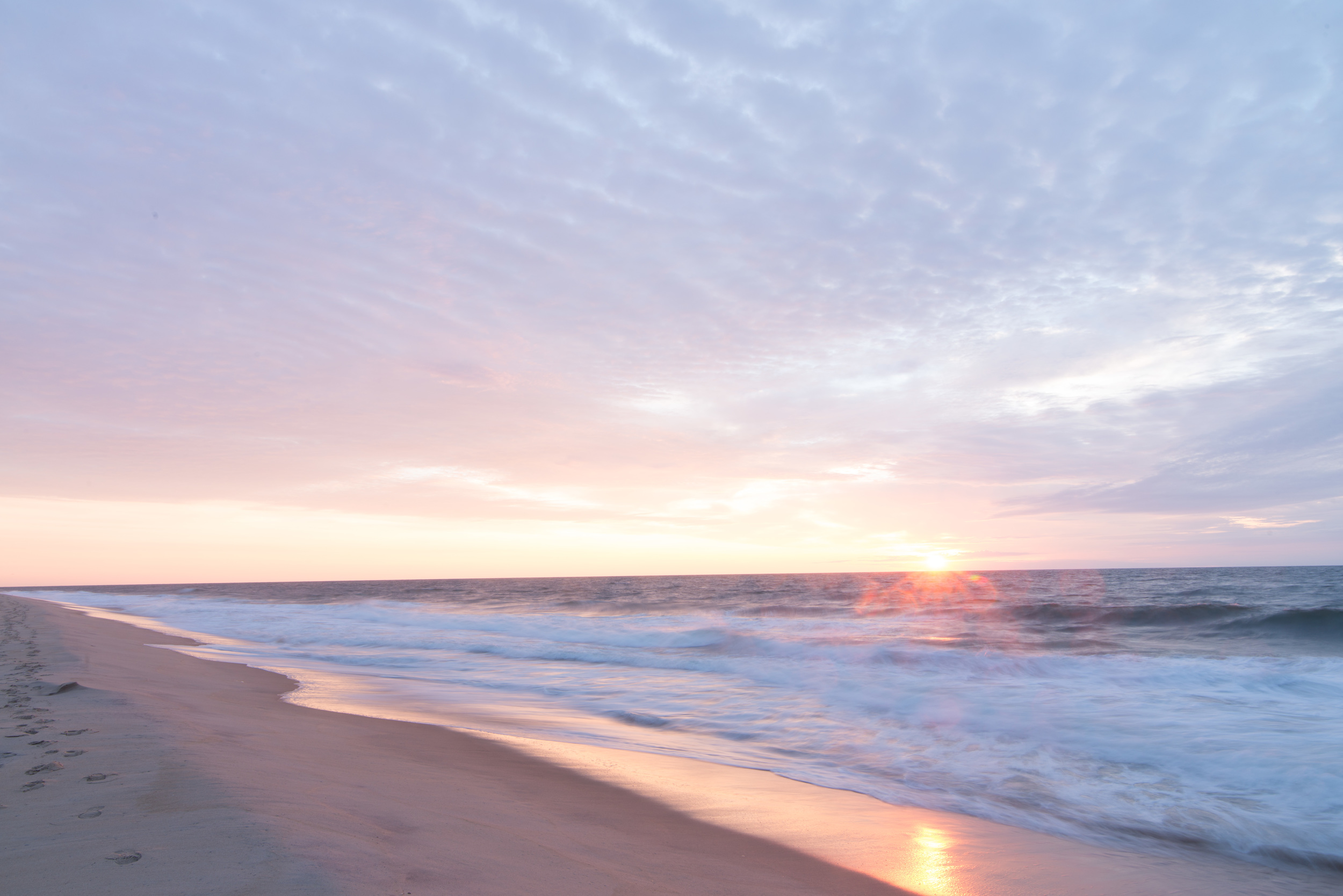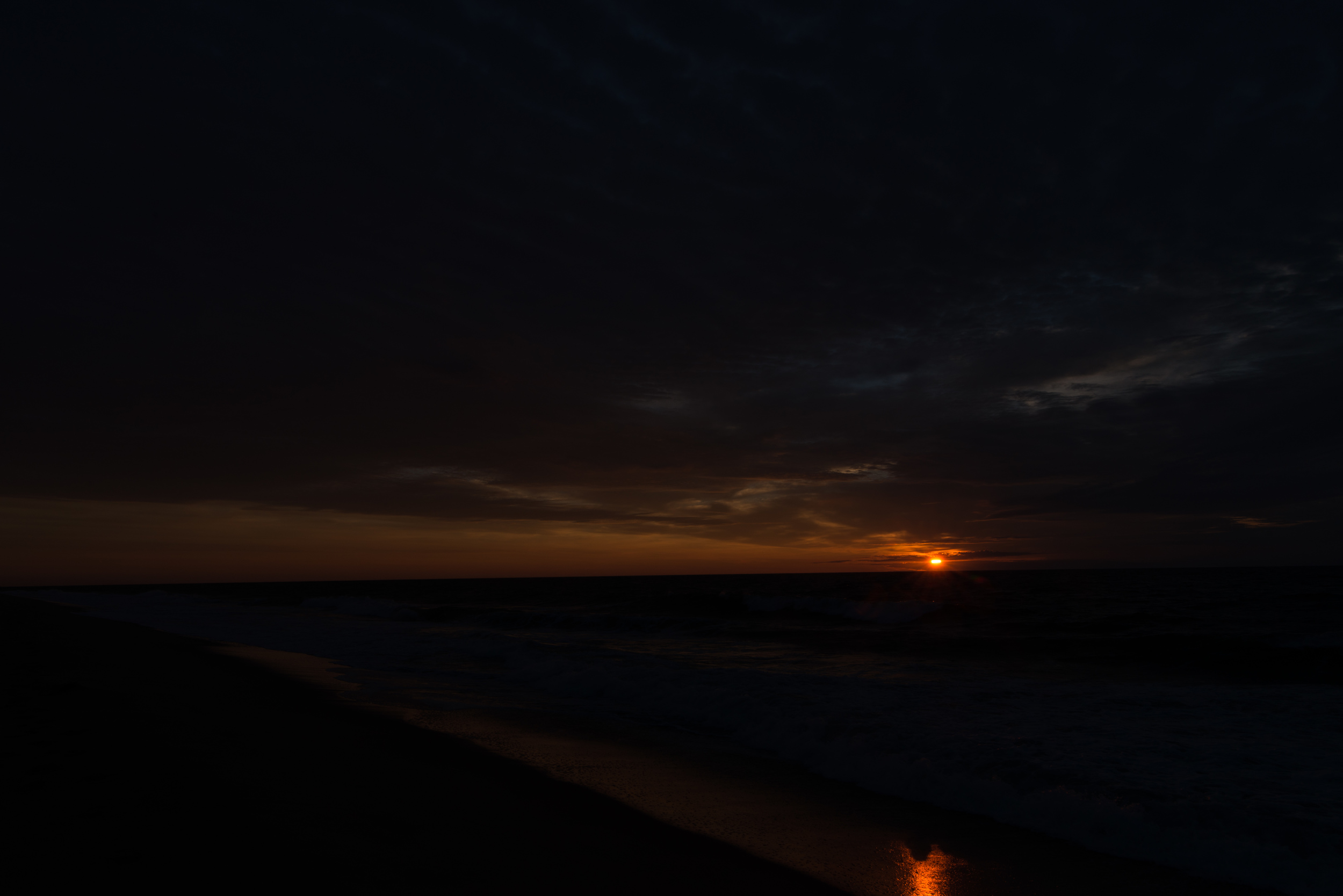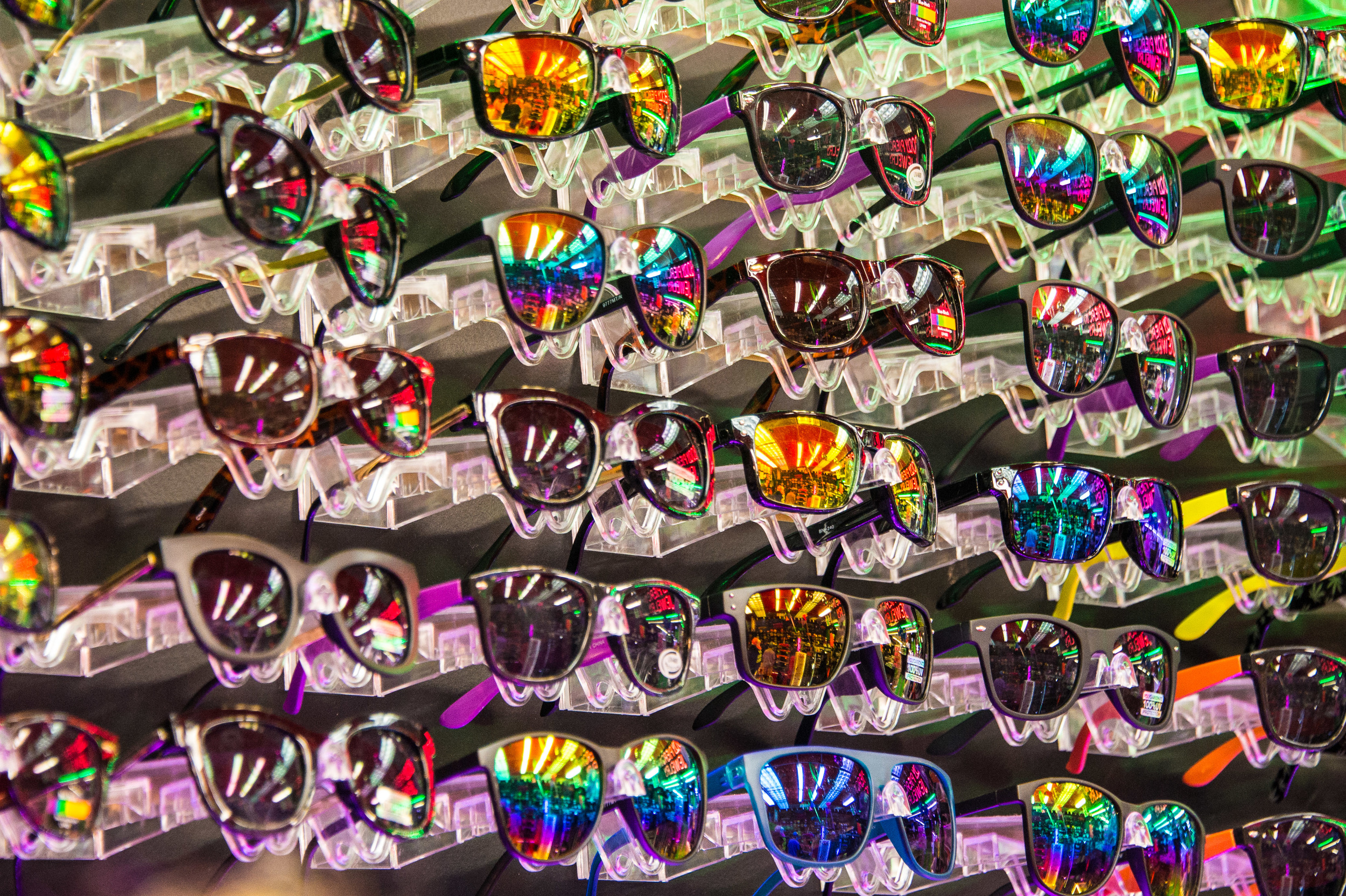Many mornings we are greeted with a wonderful light show as the Sun sprays its light across the ever spinning Earth. The infinite variety of variables assures each day of its individuality. The position of the Sun, the season, the atmospheric content, water vapor, clouds, etc. wow us with a universal symbol of rebirth each dawn. Creating a good photograph of this celestial event can be challenging.
Watching a sunrise evokes different emotions within each of us, conveying them from the moment they occurred to a canvas that can raise them from your memory in the future is the greatest part of the challenge.
A little biology about our ocular sense; our eyes can see a great amount of contrast between light and dark. In photography the amount of light is measured in f-stops. The human eye can see about twenty f-stops of light, which means if you can picture the blackest black in a dark room, and compare it to a brightly lit glowing white object on a sunny day, this is the complete contrast scale that we can perceive. Divide that into 20 sections of brightness levels and you have our f-stop range of seeable light. Here’s the photography problem: modern cameras can capture between five and six stops of light. Often, this isn’t a problem. Think about a cloudy day. The difference between bright objects and dark objects isn’t that great so a camera’s job is pretty easy. But something like a sunrise, which has a very bright glowing ball of fire in the scene and other objects which have very little illumination because their backs are towards the Sun and are very dark makes a photographer’s job more difficult.
One way of dealing with this huge contrast problem is to rely on the awesomeness of your camera’s sensor and adjust the photograph is using an editing program such as Adobe Lightroom or Photoshop. One advantage of this method is that I can freeze objects in motion with a fast shutter speed. A few of the drawbacks are that the aperture (opening of the lens) must be very wide to capture as much light as possible very quickly which limits the depth of field (think depth of focus) of the image. This is acceptable usually with a sunrise because the clouds in the distance don’t need to be crisp and sharp, after all, they are clouds. Another drawback is that to capture an image at a fast shutter speed the ISO or sensitivity of the camera’s sensor needs to be increased, which increases the amount of noise in the picture. With these limitations, post production becomes very important in photography.
In the photograph below I wanted to show the Sun rising over the ocean with the light being dappled along the crisp spray and the tops of the incoming surf. Shutter speed was 1/1000 of a second to freeze the motion of the spray. Aperture was at f/5.6 to let in a lot of light but to keep the whole wave in focus. ISO was set to 800 so the camera sensor could soak up the light quickly.
Next time we’ll take a look at another way to create a special sunrise picture, High Dynamic Range photography.















